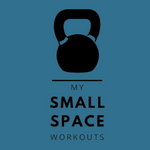If you’ve started running but have found yourself asking why can’t I run for more than 2 minutes? then keep reading! The most likely reason is that you simply suffer from a lack of conditioning and I’m going to set out EXACTLY how to deal with that. Being able running is our BIRTHRIGHT and I’m going to help you reclaim it!

[lwptoc]
Run For Your Life
Like most people who will read this article, I once struggled running for more than two minutes. In fact, I probably struggled to hit the 1-minute mark!
A childhood spent in front of a computer screen meant that by the time I hit adolescence I was physically incredibly feeble.
As the hormones kicked in, I became obsessed with girls yet completely lacked self-confidence. So I reached for the weights and began to pump up my muscles instead of trying to build a core level of overall fitness.
On the rare occasions I did try running, I would end up either injuring myself or throwing-up out of sheer exhaustion!
The experience of running was always so unpleasant that by my early 20s I had abandoned any ambition to be able to run and instead kept myself busy in the weights room of the local gym.
I ended up with big swollen muscles but I’d be out of breath if I had to climb more than a few steps! I was so unfit it was embarrassing – despite looking fit to the outside world.
So if you’ve tried to start running but have failed to keep it up, or if you’re simply too scared to try – I want you to take heart from what I’m about to share. And remember…
You’re not alone.
I have been where you are, but just this week I succeeded in completing a 5k in 25:20 as part of a 30-minute run that I do 3 times per week. That’s certainly not a record-breaking time by any means, but for somebody who genuinely once couldn’t run for more than 2 minutes – it’s brilliant!
And what’s more, I’d only been running for 2 months!
You’re going to be able to do the same – perhaps not at that pace, but you’ll definitely be able running for 30 minutes non-stop.
Just keep reading and at the end of the article, take action.
Why You Can’t Run For More Than 2 Minutes?
In a recent article about creatine I gave a concise breakdown of how our muscles use a molecule called ATP as energy to fuel muscle movement.
However, ATP is only the fuel for the first 15 seconds of exertion.
After that we use Glycolysis (anaerobic – meaning without oxygen) up to 50 seconds.
Then we use Glycolysis (aerobic – meaning with oxygen) for up to 90 minutes.
We need to condition our body to efficiently utilize each of these energy systems and the only way to do this, is to ensure we perform exercises that require energy from each of the energy systems.
This may look something like this:
- ATP – heavy weightlifting for sets of between 6-10 reps
- Anaerobic – kettlebell circuits
- Aerobic – running
Running is the easiest, cheapest and most convenient way to train aerobically. However, like any kind of training, you will only improve if you train consistently over time.
Other factors that you need to be aware of are that your muscle and tendon conditioning may be letting you down, making it difficult for you running for a sustained period.
Again, the only way to improve this, is to train regularly, within the abilities you have and NOT to push too much too soon.
A good stretching program can help to improve the health of your tendons.
The body has an incredible ability to adapt, but you don’t want to force the adaption process too hard.
A common way this happens, is thinking you have to beat your last performance EVERY workout / run.
Don’t fall into this mindset – I’ll show you how to prevent this later on in the article
When you run too fast or too far, you risk injuring yourself which could potentially put you out of action for weeks, causing you to lose all your gains.
That kind of frustration will deter you from re-starting your running program.
Finally, you want to ensure that you’re keeping yourself properly hydrated BEFORE and during your run. Dehydration can effect exercise performance and by the time you begin to feel thirsty, your body is already compromised.
How to Run For More Than 2 Minutes
SLOW DOWN!
While you’re building up your stamina you really don’t need to worry about pace.
When I first started running, I would joke that rather than jogging, I appeared to be doing the shuffle of shame! My stride was so short and my speed so painfully slow, that at times, I thought it would be quicker if I walked!
That really doesn’t matter. Once the stamina builds, your pace will improve too – and you’ll be surprised how quickly this happens once you have settled into a consistent running program.
So don’t worry about pace at this stage. Just keep putting one foot in front of the other and make an effort running slower than you feel you can.
If you’re anything like me, that’s a totally counter-intuitive thing to do, but I want you to use you will power to stop yourself from trying running too fast.
BREAK IT UP!
Don’t try running for more than 2 minutes to begin with, but do try running in intervals of between 1 and 2 minutes with a few minutes break in between.
I highly recommend the Couch to 5k running program.
If you’re on Android the Just Run: Zero to 5K app is highly recommended. This does the hard work for you by setting target dates for your 3 runs per week.
It also gradually increases the time you spend running each week so that you SAFELY build your stamina.
Yes, you will have some runs where it feels really hard and you may even feel like you’re not making any progress, but believe me, if you STICK WITH THE PROGRAM you will be amazed at the progress you have made by week 9.
To put this into context, in week 8 I was running a 5k in 28 minutes and feeling like I wasn’t making any progress.
In week 9, I ran a 25 minute 20 seconds 5K!
I was so pleased by the speed of my improvement in that final week and I guarantee, you will be too.
BE CONSISTENT
If you haven’t already gathered, it’s your coverall consistency that will determine whether you make it or not in your goal of running for more than 2 minutes at a time.
The app mentioned above will make it so easy to follow the Couch to 5K plan, but ultimately it’s your will power to put on your running shoes and leave the house that will make this happen.
If you master consistency and stick to the plan, YOU WILL SUCCEED.
What Should You Aim For?
First of all make sure that your expectations and realistic.
If you’re seriously unfit, then perhaps your goal will be to be able running for 10 minutes non-stop in 9 weeks.
But I’d rather you not put any arbitrary targets of time / distance / pace on your running program.
Instead, I’d rather you commit to the Couch to 5k program, download the Just Run: Zero to 5k app (or similar) and just do your best to complete the three running sessions per week.
If you spend the next 9 weeks repeating just the week 1 sessions, that doesn’t matter!
Because while you may feel that you’re not making any progress, I guarantee that on the inside, your body will be responding to the new stresses you’re putting on it and your health will be improving.
What Benefits Can I Expect From Being Able to Run?

If you commit to running 3 times per week, you are very likely to see a massive difference in your body composition over the 9 weeks of the Couch to 5k program.
This is especially true if you’re eating healthy and cutting down (or omitting) refined sugars from your diet.
As you start each running session with ballistic stretching and end each session with static stretching, you’re going to find that your flexibility begins to improve and that you’re able to move more freely.
Read our review of the Hyperbolic Stretching Program and learn how we got flexible fast.
You may also find that back ache disappears and your posture improves as you strengthen and engage muscles that have been neglected for years.
One benefit you can absolutely expect from running is that you’ll live a longer life. But don’t think that running faster and harder confers greater health benefits. This TedTalk by a cardiologist makes the case that:
- Training running marathons is bad for your arterial and heart health!
- Slower is better, keep your pace below 8mph or 4:40/km, 7mph or 5:20/km appears to be optimum
- Run no more than 10-15 miles per week IN TOTAL
- 3 days of running per week is ideal
You may also be interested to learn that improved arterial health can help to prevent or reverse erectile dysfunction (‘ED’). This is because vascular disease is considered to account for 70% of physical-related causes of ED.
Let’s Take It To The Streets
So I hope by the time you’ve reached this part of the article, you’re itching to get your trainers on and start your Couch to 5k journey.
If you’ve been unable to run for more than 2 minutes, don’t worry! By following the advice in this article you can be confident that you’re about to start a program that will see your fitness (and your life) transformed!
In less than 9 weeks you could find yourself able to run 5k without stopping!
Great health, improved body composition and greater flexibility are all yours for the taking!
What are you waiting for? Get stuck in and let me know in the comments how you’re getting on.

